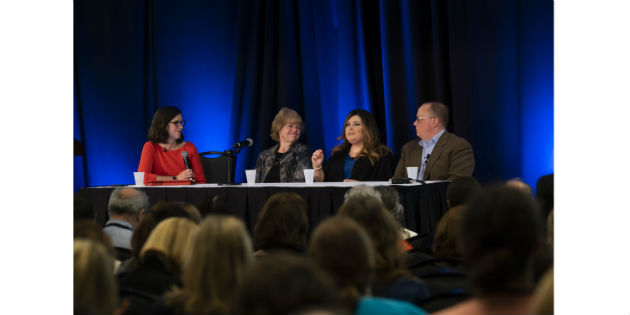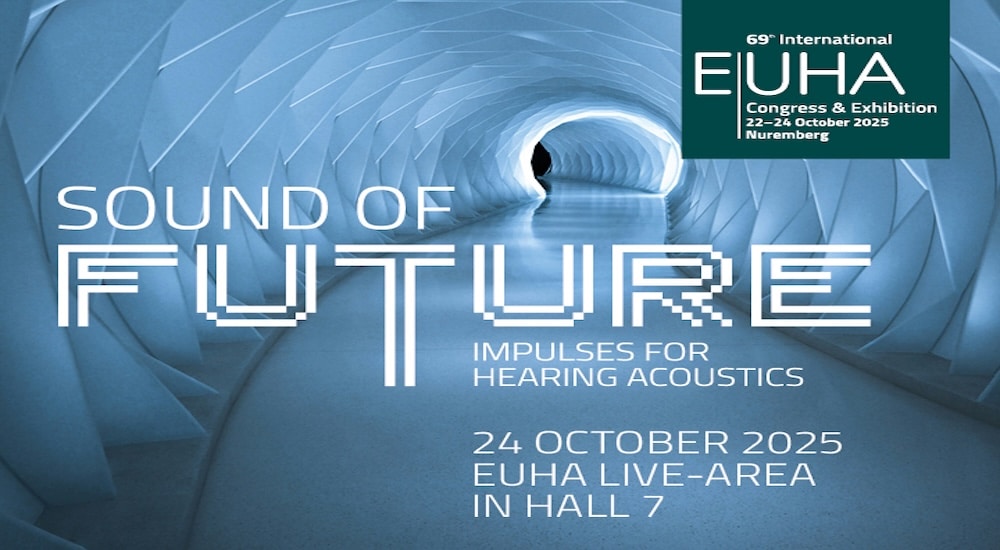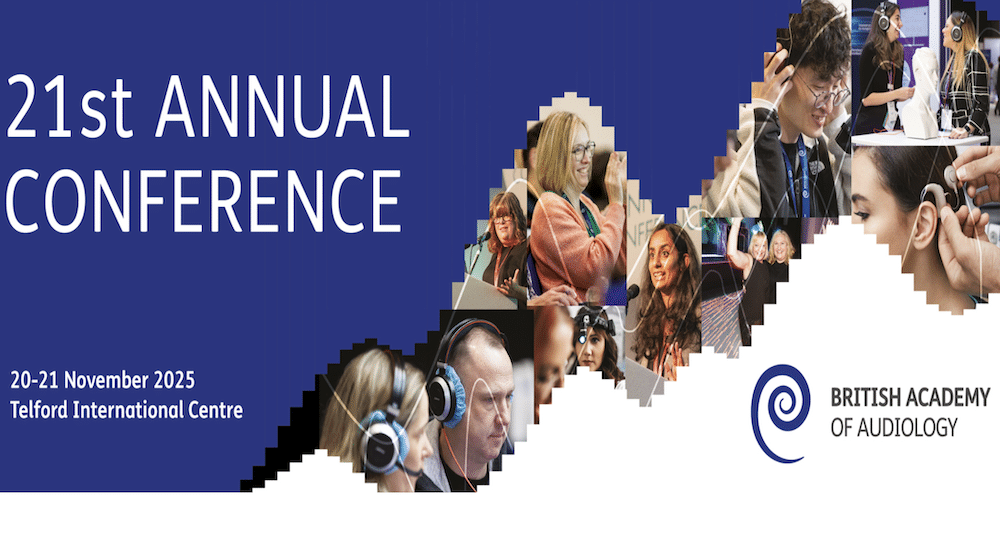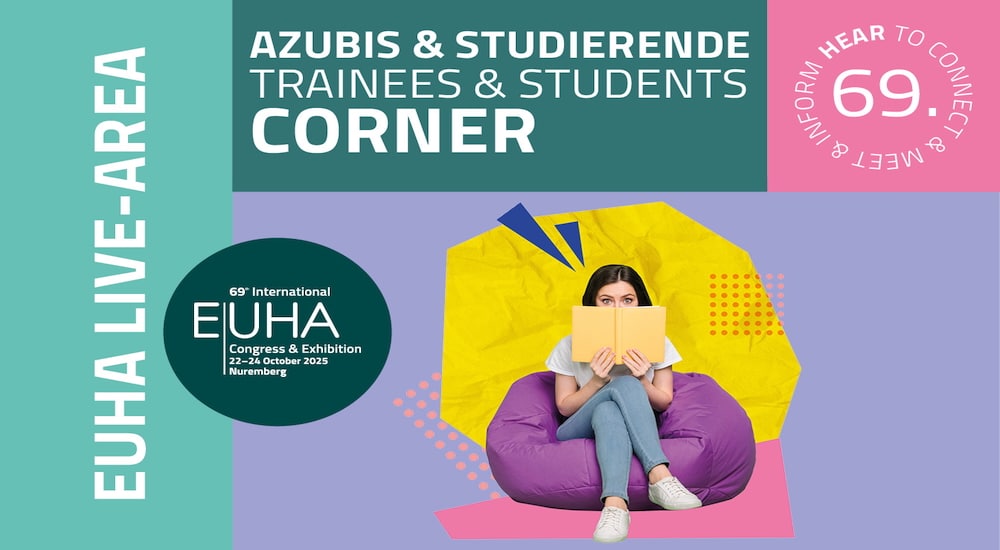Developments in tele-audiology, big data, and precision medicine
Remote audiology
Rapid technological developments are paving the way for new possibilities in hearing care.

Smart application of digital technology can make treatment methods more efficient and hearing aids more advanced. The advantages for both the hearing care professional and for the patient can be considerable. But, with new possibilities come new responsibilities.
First, we need to distinguish between “telemedicine” and “telehealth”: telemedicine refers to the practice of offering medical services via telecommunication technology”, says Dr. Matthew Fitzgerald from Stanford University. He intervened on Friday April 20th during the session on Telemedicine and New Avenues for Patient Engagement at the AAA conference in Nashville, Tennessee.
“Telehealth is a wider concept and includes education and policy for instance. Tele-audiology is offering audiology services at a distance, and teletherapy offering therapeutic services remotely.” There are several tele-audiology projects that are already under way, such as mapping of patients with cochlear implants, an audiometric assessment from another location, and monitoring of hearing aids from a distance.
Dr. Fitzgerald does, however, point to an important consideration when initiating these types of projects. “When you’re setting a project up in one of these areas, first ask yourself the following questions: what problem are we trying to solve?” What are the clinical needs that can be addressed by the project? What are the objectives?
Rapidly growing practice
Steve Hallenbeck, director of User Experience at GN ReSound, elaborated on the implications of remote care at the ReSound symposium at the conference, during the session on Telehealth and the Connected Patient: Trends that are Shaping the Future of Audiology. “eHealth or telecare is a fast-growing industry in which some 41.2 billion dollars is expected to be generated in the year 2021”, he adds. “Right now, we’re at 26.5 billion.” According to Hallenbeck, it is no surprise that this industry is growing because there are obvious advantages. Through the application of information and communication technology, patients no longer need to go to the clinic in person for personalized care. Via an app on their smartphone, tablet or other device, patients (who are often elderly) can directly contact the person treating them, without being obliged to be at a specific place at a given time.
This makes the treatment process somewhat more efficient and less expensive. Patients no longer spend time or money on travel. This alleviates a lot of stress for patients, which is also an advantage for the effectiveness of care and the engagement of patients in their own treatment. The possibility of making an appointment easily online also benefits continuity of the treatment process. And it makes care more accessible. This is especially true for people who live far from treatment centers, or who cannot go to a clinic for other reasons.
Audiological care from a distance has many advantages, both for patient care itself and also on financial grounds. Research has shown that 86% of patients are willing to use remote audiological care, Steve Hallenbeck adds. Moreover, the digital infrastructure for this type of care is already in place. The hearing sector itself has the necessary tools and that also applies for this target population; the majority of patients now have a laptop, smartphone, or tablet. “In this regard, all the conditions for a greater role of eHealth in hearing care are in place”, says Hallenbeck.
Telecare is an overarching term for many applications of (digital) technology to healthcare. Things like analysis of patient experiences, digital micro-interactions, and big data analyses also fall under telecare. Patient experiences and client satisfaction, for instance, take on a new dimension with remote care. In telecare, patients are more involved in their own treatment. They have better access to medical information, and closer links are created between patients and carers. If someone isn’t satisfied with treatment, this can be expressed very simply and the switch to another care provider becomes easier. “The overall patient experience is becoming increasingly important and care givers should be aware of this”, says Hallenbeck. In addition, obviously, to professional medical treatment, the hearing care professional must also be able to offer an enjoyable user experience. eHealth can play a major role in this area. On the one hand, for instance through handy online applications, the contact between the patient and the carer can be facilitated. On the other, with digital tools, we can find out more precisely what individual patients find important. “The fact is that a personalized customer experience is going to play an increasingly central role in healthcare provision”, says Hallenbeck.
As an extension to this, we find so-called micro-interactions. These are times when users interact with small, task-oriented aspects of a website or application. Through these micro-interactions, patients can for example give more specific information about their condition on the website of a care provider, enabling the treatment provider to anticipate directly. The validity of medical data can thus be enhanced because these data are repeatedly assessed and verified. This reduces the risk of human error and increases the efficiency of care provision. Where it was previously commonplace to wait weeks for a follow-up appointment, this can now be done digitally, practically when the person wants.
Looking forward
In the coming years, new systems are likely to involve the patient more and more directly in their own treatment journey. In just three to five years’ time, mobile and digital functionalities will be so highly developed that patients will be able to organize a large proportion of their care via a single interface, says Steve Hallenbeck. We’ll have greater access to lab test results and clinical data, and we’ll be able to make medical appointments ourselves more easily. Treatment journeys will need to be increasingly determined and implemented through direct discussions with the patient. eHealth-applications will also be available for acute care.
In the subsequent years, artificial intelligence will play an even more comprehensive role, Hallenbeck predicts. Mobile, digital functionalities are likely to form the primary channel between patients and care providers. Patients will be able to use real-time interactive coaching, and will have full access to their own clinical data. In addition, patients will be directly involved in formulating treatment goals, including in relation to insurance related issues. eHealth applications will, at this time, also be available for post-acute care and behavioral therapy.
Steve Hallenbeck: “To better understand and predict behavioral and reaction patterns in patients, data analysis will be used more and more. Data analysis will also be used to a greater extent to align treatments to the individual patient. Likewise, analyzing data can help to reduce costs.”
At the moment, a conventional hearing consultation mostly goes like this: the hearing care professional takes the lead and gives audiological instructions to the patient, explains Hallenbeck. Typical treatment includes an assessment of hearing, selection and fitting of a hearing aid, and planning a follow-up appointment. “This needs to become far more interactive and service-oriented. As part of treatment, the patient will need to be better understood in terms of his or her personal wishes, preferences, and experiences, so that you develop a clinical setting where you arrive at the most effective treatment in a holistic, collaborative way.”
Voices from the sector
Resound Linx 3D hearing systems can be linked to the Resound Assist app. With this app, the hearing aid can be adjusted remotely to the personal characteristics and wishes of the wearer. For many patients and professionals, these types of smart functions are often a great outcome. Mostly, only minor adjustments are needed when tuning a hearing aid. Always making an appointment for this takes up a lot of time for both the patient and the professional. A panel of people from the profession looked at this more closely in the ReSound session.
Jana Emola-Austin, owner of Allison Audiology in Houston, Texas has some doubts: “Won’t this be to the detriment of personal interaction, our personal bond with the patient that we’re so attached to?” Austin is, in fact, in two minds. Admittedly there will be less contact in person, but at the same time it will become possible to provide daily care via online channels. This is more efficient and works out well for the patient’s agenda, while this places the patient in a more central position.
The hearing care sector is a competitive market where providers need to differentiate themselves from the competition. It appears that patients are increasingly interested in these client-friendly, digital functions when they choose a provider. And although certain population groups, particularly the elderly, are not traditionally known for being receptive to new technologies, patients in these groups are becoming increasingly familiar with these functions. The advantages are simply too big. And if patients are not too skilled with smartphones or tablets, a family member or carer can always help them out. This means that patients are more and more enthusiastic about the possibilities offered by new technologies and are increasingly willing to improve their skills.
It is important that we create the right expectations for patients, says Chad Jenkins, Executive Director at Audio Recovery, Inc. “It’s crucial that we don’t promise more than we can delivery on. Can we really satisfy all online requests? In this regard, I’d like to see in the future that we make greater use of statistical data. Also, the whole company team, from the front desk to the care provider will need to communicate efficiently and transparently to then be able to communicate with the patient. We’ll all have to be on the same page. We must also make it clear that digital communication will not replace one-to-one contact. This is just an extension of our services, and it helps to improve efficiency.”
Another advantage of remote care for providers is that it may make it easier to retain patients. Because distances will become less important, patients may remain with their current provider even if they move house, says Thumper Johnson, Director of Audiology, Mid-Kansas ENT, in Wichita, Kansas. “It has really helped us to retain patients.”
In addition, it is very important that patients are properly trained when it comes to using telemedicine solutions. Care providers must take into account the patient’s individual expectations and also their technical skills. Which questions or requests can in fact be sent via the app, and which cannot? This needs to be made clear for a 90 year-old and for a 50 year-old. And there are of course patients who do not adapt easily to these new forms of treatment. Care providers must not be biased in this respect. There are people in their 90s who are very at ease with their smartphones, while some young people have a lot of trouble using these devices. It’s very important that front desk personnel be trained to make this transition process as problem-free as possible for each patient. Help should be provided for installing apps, and staff must be on stand-by if there are questions. This can help to reduce uncertainties.
Most specialists agree – and this is apparent from patient reactions – that these tools make patients more self-confident. This is what Chad Jenkins has seen: “Patients feel strengthened in their ability to make decisions themselves. They feel that they have more control over their treatment and tell us that they’re very happy about that. These apps give them a better overview. I am sure that we can massively improve the patient’s situation through technology.”
Big data and precision medicine
Laurel Christensen, ReSound Chief Audiology Officer, talks more about this topic. “The extent to which you can personalize the app leads to greater client satisfaction. This type of thing should be better integrated in our services. Only then can we stand out in this competitive market”. Chad [Jenkins] also mentioned that this is a market differentiator. It’s something you can do differently because you offer a service that others don’t have. And let people know within what timeframe you will respond. Whether it’s within 24 or 48 hours, whatever works within your practice. Call your patient after you have made the change; this will get personal feedback going between yourself and your patient.”
Big data was the next topic on Christensen’s agenda. Big data is a term that covers datasets that are so big or so complex that they cannot be processed by regular data processing software. The large scale of these datasets poses several challenges concerning storage, search functions, information sharing, visualization, updates, privacy, etc. But if we can manage and use big data in the right way, it could be highly beneficial for healthcare.
Most people are not aware of this, but big data is playing an increasingly important role. It already has an effect on all our lives. “We are saving massive quantities of data at the moment. If we use these data in the right ways, in compliance with strict privacy laws, we can do much good with them”, says Christensen. “We live at a time and in a world where, from minute to minute, information about us is being recorded. Practically everything we do leaves a footprint. This information should also be made available for medical care.”
Christensen then discussed precision medicine, which involves tailored healthcare. This area also uses big data. Medical decisions, treatments, and products are increasingly designed for the individual patient. Diagnostic tests are often used to determine the right, optimal therapies for individual patients. To do this, doctors use the unique biological characteristics of the patient. “Also a kind of fine tuning at a distance”, says Christensen.
Findings from research
A study has given some indication of how patients feel about remote care, following distance support for hearing aid wearers. Gina Angley, from the Vanderbilt University School of Medicine, has researched this topic and spoke about it in the session on Telemedicine and New Avenues for Patient Engagement. She wondered whether remote follow-up appointments are feasible, and what the advantages of this would be. To determine this, Angley carried out a practical experimental study. Patients were asked to take part in audiology follow-up appointments to examine how this went concerning installation of hardware and software, and in terms of treatment. All participants appeared to prefer the use of a webcam for the follow-up appointment.
The results of this study were unequivocal: 86% of people with hearing loss who took part in the study were in favor of audiological care at a distance under specific circumstances, such as for instance a remote residence. A very large proportion of the patients indicated a preference for remote care. All good reasons to continue developing this new area of patient care. To sum up, it appears that patients, professionals, and researchers all agree that remote care could provide real benefits.


